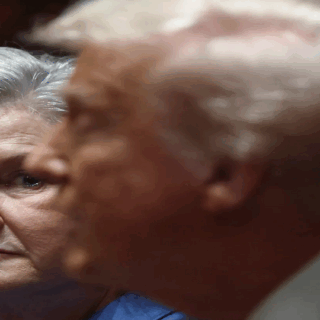
Many Japanese visit Shinto shrines for devotional purposes and yet have their funerals held at Buddhist temples.
In recent years, Christian-style weddings have become fashionable, making the situation even more complicated. Many Western observers find Japanese spiritual practices hard to disentangle and so are tempted to dismiss Japanese spirituality as convoluted and confused. In their own terms of reference, they are quite right. Japanese spiritual practice is complex and subtle, and so it is hard to classify according to Western concepts of “either/or.” This is a strength in many respects.
However, it must also be said that in Japan, as in other advanced industrial societies, a climate of spiritual ignorance has arisen. This leads, among other things, to a casual, “mix and match” approach to spiritual practice. Therefore, those who move randomly from one practice to another-a Christian wedding to a Buddhist funeral, for instance-often justify themselves by saying that the marriage and funeral ceremonies are only customs.
From earliest times, we have not conducted funeral services at Shinto shrines. This does not necessarily mean that we have never had Shinto funeral services as such, but even when we did, we never used the shrine for the funeral location. That is the case even with the funeral of the shrine’s kannushi (Shinto monk).
There are several reasons for this. To begin with, the shrine is a clean and pure place where the spirit of Kami descends. It is therefore not the place to bring a powerful uncleanness such as that of a dead body. This has been understood in Japan from ancient times. Instead, a night of vigil takes place at the dead person’s home, and after a farewell service the body is buried at a burial site. The Shinto shrine is not involved in this process.
When Buddhism first arrived in Japan, the Buddhist temple assumed the task of conducting memorial services for the dead, and so has been strongly involved in funeral rites since medieval times. Through the Tokugawa government’s enforcement of “the parishioner system in the Buddhist temple,” each family developed a supporting relationship with a particular temple of their choice, to whose care they entrusted the funeral, the ashes of the dead, and the positioning of the tomb. Thus Shinto abandoned the funeral service duty, except in some areas of Japan where Buddhist influences were slower to penetrate.
Since the Meiji era (1868–1912), however, there has been a ceremony called a “Shinto funeral,” but it is not conducted by a kannushi. Instead, it is carried out by the teacher of a particular Shinto group called Kyoha Shinto. This is not ancient Shinto, but is made up of several schools that have a founder, doctrine, teacher, and a meeting place for teaching. We cannot therefore claim that this post-Meiji funeral service is conducted in accordance with koshinto.
Originally, funeral services and marriage ceremonies took place in a family or community setting. The corpse was also supposed to be buried at an appropriate place within the community. During the Edo period (1600–1867), however, it became the general practice for Buddhist temples to be asked to care for the cremated ashes of the dead. Therefore, the recent trend in Japan toward public cemeteries and the vogue for natural burial services without formal religious affiliation can both be seen as a return to ancient ways of disposing of the dead.
In Shinto, a corpse is seen as merely a shell without a spirit-soul, and so it should not be the object of special veneration. Instead, it is considered as somewhat unclean, and so it has to be disposed of quite rapidly. Villages used to have what was known as a “cemetery for burying or throwing away,” but in the mid-1960s the Japanese government prohibited internment there on health grounds, because of concerns over disease epidemics. We can find the ruins of this type of cemetery throughout Japan, a place that was used literally to throw away the corpse The corpse itself is not important; what matters is where the spirit-soul has gone.
The uncleanness of death is caused by the negative energy released during the disintegration of the physical body, aramitama and nigimitama. Recently, scholars of ethnic customs and folklore have researched and explained the triad structure of hare, ke, and kegare. According to this model, kegare is interpreted as ke (chi or ki energy) -gare (withers or leaves). They also present the relationship between hare and kegare as people transforming the energy of uncleanness (kegare) into clean energy through a purification exercise (harai).
However, this explanation can only be seen as an abstract and therefore incomplete academic approach from the viewpoint of spiritual practitioners. Kegare emitted either during the disintegration of the body or from wicked thoughts has a semi-material power, and so we purify it only by washing it away or burning it out.
We cannot transform the malignant energy into good; therefore we should avoid contact with it as much as we can. Purification has to be carried out thoroughly and according to strict principles, and so the corpse cannot be introduced into the sacred space.
From a spiritual perspective, reverence for a corpse or cremated ashes is ultimately meaningless. The real memorial service for the spirit of the dead is a process of talking to the dead to convince them to move on to a higher spiritual plane. It is also about praying to the higher spirit of Kami to guide the new spirit. We can practice this service from the place where a corpse or the ashes are held or where the tomb is established. It is helpful to use a memorial tablet, to which away the nigimitama of the deceased person will be attracted.
Japanese families often prepare such tablets and offer prayers in front of them every day at their home altar, but even these procedures are not strictly necessary. Not only is it meaningless but it is also positively dangerous to go to the unclean (kegare) place of the corpse or ashes. We should not confuse the idea of a clean inner circle with that of a cemetery for throwing away a corpse.
It should be noted that the spirit of the dead sometimes stays around in the early stages, but usually the spirit moves quickly into the other world. It rarely comes down to the tomb or to a funeral hall. Needless to say the impurity (kegare) of the corpse has to be expunged. It is also necessary to drive away the evil spirit or magatsubi, which tries to get into the corpse, and purify the family members who were exposed to the unclean energy from the dead. This purification practice can be done either by a Shinto kannushi or Buddhist monk with well-developed spiritual powers.
My own belief is that the real reason why kannushi during the Edo period were so willing to let Buddhist monks take care of the dead was that they did not wish to come into contact with the uncleanness. Where a kannushi did take care of the funeral service for a colleague, he would avoid any service at a shrine for an entire month. This was both because he was in mourning and because he had to undergo a restrictive cleansing process himself.





